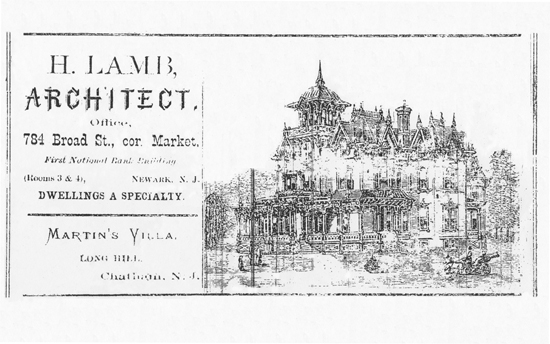What’s new in version 7.7 of the list? (pdf)
- Two unidentified photos published in the Inland Architect a century ago and recently put on line as part of the Ryerson & Burnham Digital Collections of the School of the Art Institute of Chicago have been identified: the Georgian brick house (SAIC image) was built for Charles Hathaway at 155 Prospect Street (1896), while the “Renaissance” stone house (SAIC image) was built at 92 Harrison Street (1901). Neither stands today.
- Lorenzo Wheeler’s and Herbert Chivers’s unbuilt design for the Cote Brilliante Presbyterian Church in St. Louis is now mentioned.
- Corrections: W.H.H. Jones’s name has been corrected from James, and Mount Morris Bank is now correctly sited in Manhattan instead of Brooklyn.
- Caroline and Gustav Schwab’s cottage in Tuxedo Park has been identified, and it appears to stand today on West Lake Road at Mountain Farm Road (aerial below). This can’t be confirmed using Google Street View, of course:
